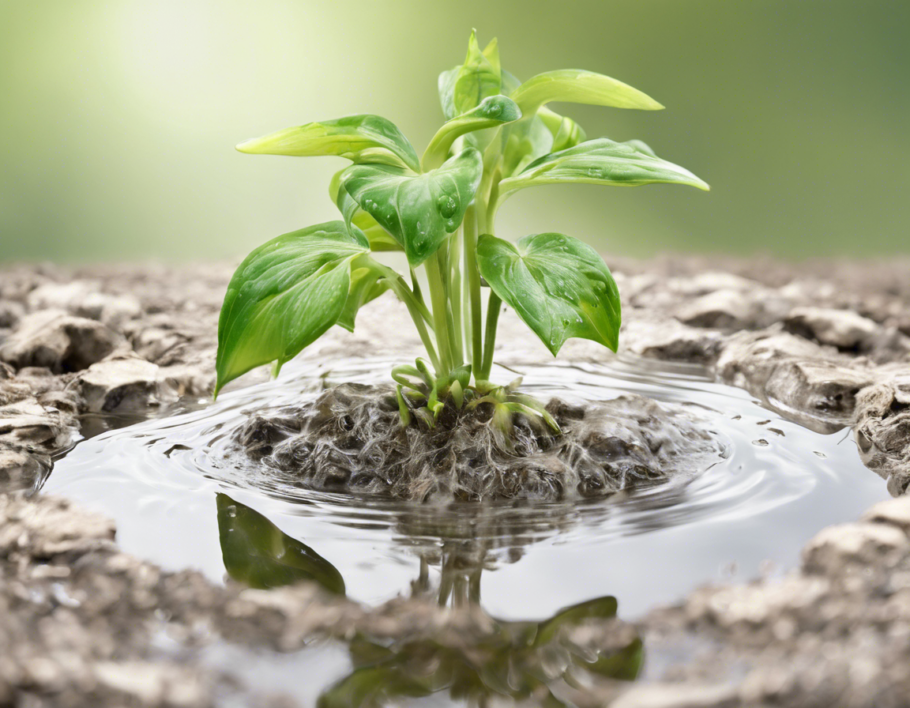Introduction
Plants require water to survive and thrive, but have you ever wondered how they actually absorb, transport, and utilize water? Understanding the plant water relations is crucial for gardeners, farmers, botanists, and anyone interested in plant physiology. In this comprehensive guide, we will delve into the fascinating world of plant water relations, exploring topics such as water uptake, transpiration, water potential, and the mechanisms that plants use to maintain water balance.
Water Uptake in Plants
Water uptake in plants primarily occurs through the roots. The root hairs, which are tiny extensions of the root epidermis, play a crucial role in absorbing water from the soil. These root hairs increase the surface area for water absorption, allowing plants to take up water and essential nutrients. Water moves from the soil into the roots through a process called osmosis. Osmosis is the movement of water molecules from an area of high water potential to an area of low water potential through a selectively permeable membrane.
Once water is absorbed by the roots, it travels through the xylem, a specialized vascular tissue responsible for transporting water and minerals from the roots to the rest of the plant. The movement of water through the xylem is driven by transpiration, a process in which water evaporates from the plant’s leaves.
Transpiration
Transpiration is the process by which water evaporates from the plant’s aerial parts, such as leaves, stems, and flowers. This evaporation creates a negative pressure in the xylem, known as tension, which pulls water up from the roots. Transpiration serves several vital functions in plants, including the transport of water and nutrients, the cooling of the plant, and the maintenance of turgor pressure.
Factors that influence transpiration include temperature, humidity, wind speed, and light intensity. Higher temperatures and wind speeds can increase transpiration rates, while high humidity and low light intensity can decrease transpiration.
Water Potential
Water potential is a measure of the potential energy of water in a system. It is influenced by several factors, including pressure potential, solute potential, and matric potential. Pressure potential is the physical pressure exerted on the water, solute potential is the effect of solutes on water potential, and matric potential is the attraction of water to solid surfaces.
The water potential gradient drives the movement of water in plants. Water moves from an area of higher water potential to an area of lower water potential. By understanding water potential, we can predict the direction of water movement in plants and how different factors affect water uptake and transport.
Plant Adaptations for Water Conservation
Plants have developed various adaptations to cope with limited water availability in their environment. These adaptations help plants survive in arid or water-stressed conditions. Some common adaptations include:
- Root Structures: Plants may develop deep taproots or extensive shallow roots to access water at different soil depths.
- Cuticle: The waxy cuticle covering the leaves helps reduce water loss through transpiration.
- Stomatal Regulation: Stomata are small pores on the leaf surface that regulate gas exchange and transpiration. Plants can open and close stomata to control water loss.
- C4 and CAM Photosynthesis: Some plants have evolved specialized photosynthetic pathways, such as C4 and CAM, to minimize water loss during photosynthesis.
- Succulence: Succulent plants store water in their leaves or stems, allowing them to survive long periods of drought.
These adaptations demonstrate the remarkable diversity of strategies that plants have developed to thrive in various environments.
Maintaining Water Balance
To maintain water balance, plants need to regulate water uptake and loss effectively. When plants experience water stress, they may undergo dehydration and wilting, which can affect their growth and survival. To prevent water stress, plants have developed mechanisms to cope with fluctuating water availability, such as osmoregulation and water potential adjustments.
Osmoregulation involves the synthesis and accumulation of osmolytes, such as sugars and amino acids, to maintain water balance inside the cells. By increasing solute concentration, plants can prevent water loss through osmosis.
Frequently Asked Questions (FAQs)
-
How much water do plants need?
Plants’ water requirements vary depending on factors such as species, growth stage, and environmental conditions. In general, most plants require around 1 inch of water per week, either through rainfall or irrigation. -
What are the symptoms of overwatering plants?
Overwatering can lead to symptoms such as yellowing leaves, root rot, and wilting due to oxygen deprivation in waterlogged soil. -
How can I improve water absorption in plants?
Improving soil structure by adding organic matter, mulching to retain moisture, and watering deeply but infrequently can enhance water absorption in plants. -
How do plants prevent excessive water loss?
Plants prevent excessive water loss by closing their stomata, producing a waxy cuticle on leaves, and adjusting their osmotic potential to maintain water balance. -
Can plants recover from wilting?
Plants can recover from wilting if water is provided promptly, allowing turgor pressure to be restored in the cells. However, prolonged wilting can lead to permanent damage. -
Do all plants transpire at the same rate?
Transpiration rates can vary among plant species based on factors like leaf surface area, stomatal density, and environmental conditions like temperature and humidity. -
How does water move through plant tissues?
Water moves through plant tissues primarily through the xylem vessels, driven by transpiration and the water potential gradient from roots to leaves.
Conclusion
In conclusion, understanding plant water relations is essential for maximizing plant growth, optimizing irrigation practices, and conserving water resources. By grasping the mechanisms of water uptake, transpiration, water potential, and plant adaptations, we can cultivate healthy and resilient plants in our gardens, farms, and natural ecosystems. So next time you water your plants, remember the intricate dance of water within their cells and the remarkable adaptations that allow them to thrive in diverse environments.

